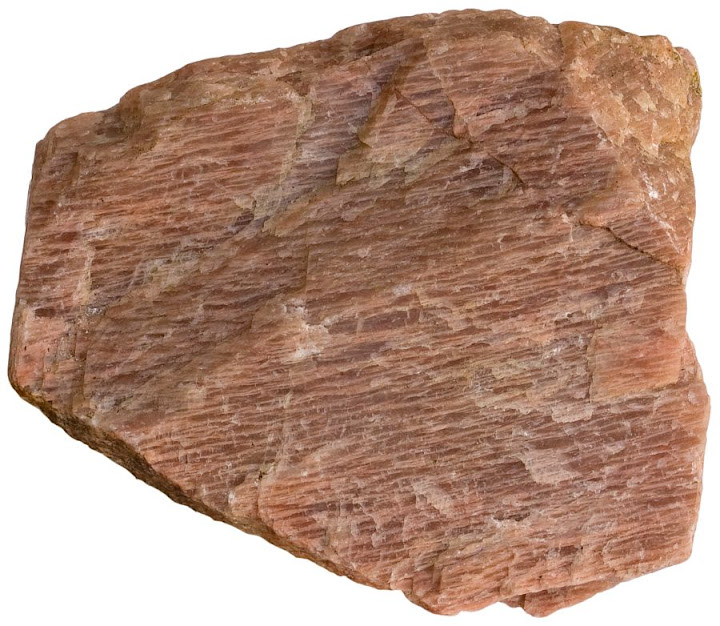Microcline is a very common rock-forming mineral. It belongs to the feldspar group. It is one of three K-feldspars (K means Potassium). The other two are orthoclase and sanidine. The chemical formula of K-feldspars: KAlSi3O8, but they usually contain sodium as well which replaces potassium.

Microcline with perthitic exsolution. White veins are composed of albite. Width of sample 43 mm.
It is often very difficult to distinguish between the three, especially between orthoclase and microcline. Sanidine is not usually colored while microcline and orthoclase are often salmon red or yellow. Sanidine occurs in volcanic rocks, the other two occur more frequently in deep-seated rocks, especially microcline which is absent in volcanic rocks. These three form like a series with their typical occurrences — microcline in deep intrusions, orthoclase in shallower intrusions but also in volcanics, and sanidine in volcanic rocks.
This mineral is often perthitic. It means that there are narrow bands of albite (sodium-rich feldspar) in the K-feldspar host crystal. Perthitic texture is often visible to the naked eye. This texture is the result of exsolution which happened after the cooling of originally homogenous crystals which are not stable at lower temperatures. Perthitic feldspar is almost always microcline.
Some varieties (amazonite) are green or bluish green. The color of amazonite is caused by a small amounts of lead. Amazonite is a rare variety when compared to the total volume of all microcline in the crust, but it is used as a decorative stone and therefore pretty well known.
This mineral is a common constituent of granite and granitic pegmatites. It also occurs in other granitoids, syenite, and pelitic metamorphic rocks. It is a common mineral in detrital sediments. Its grains are commonly more fuzzy than generally clear quartz crystals and they tend to have rectangular blocky shape. This is the result of good cleavage in several directions. The cleavage planes are at right angles to each other.

A thin section image showing microcline grain in a coarse-grained sandstone from Estonia. It is characterized by cross-hatched (tartan) twinning in crossed polars. Width of view 3 mm.

Perthitic exsolution lamellae of albite in microcline. Evje, Norway. Width of sample 6 cm.
Leave a Reply